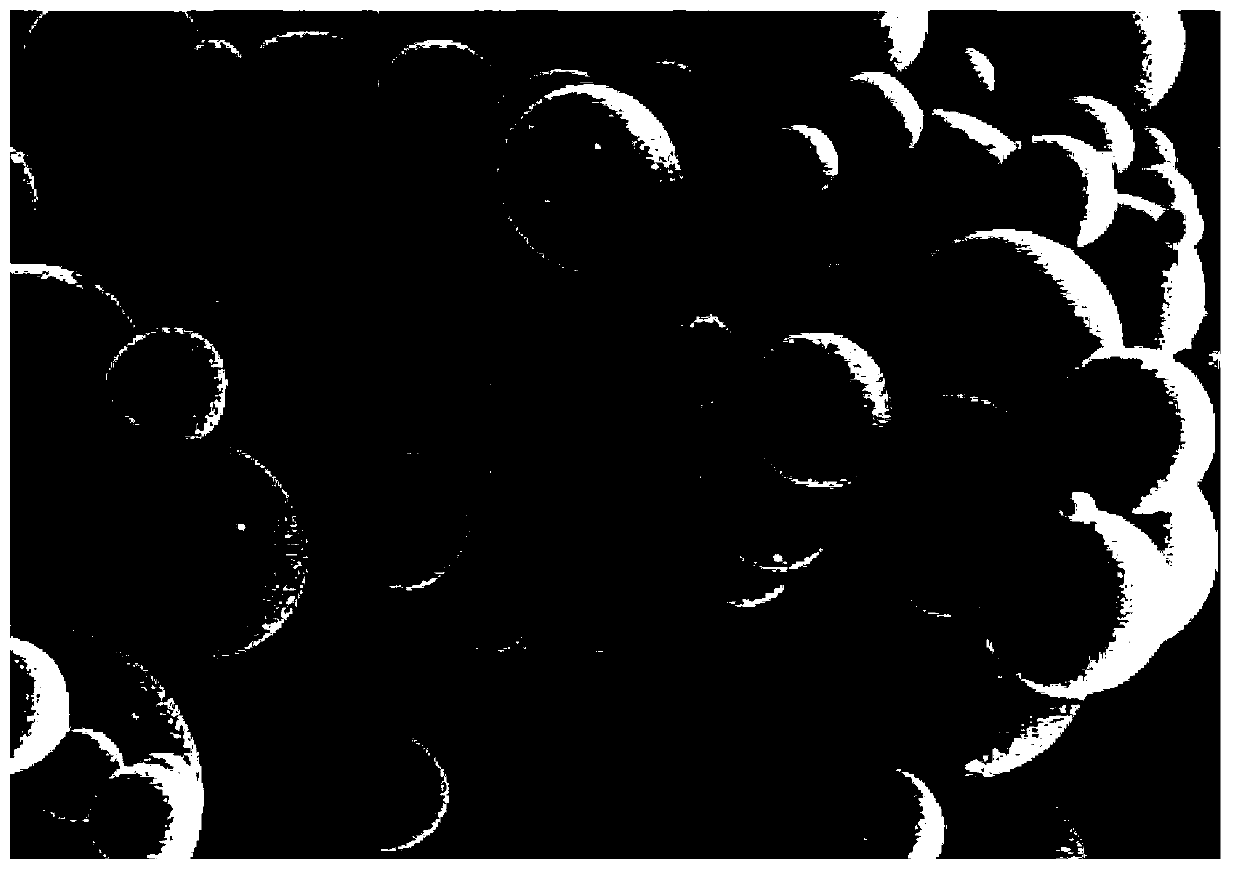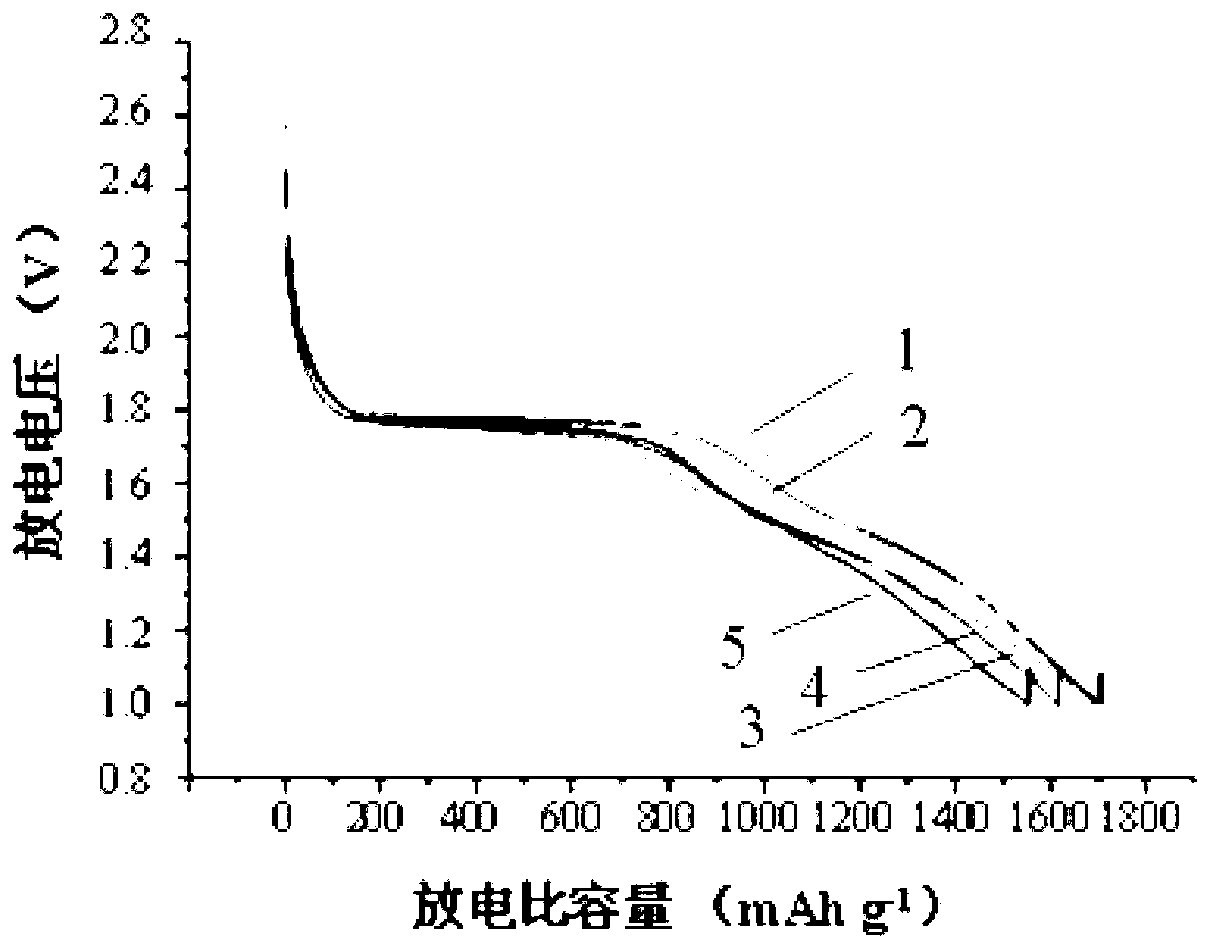Method for preparing lithium titanate coated aluminum lithium ion battery negative pole material
A lithium titanate-coated, lithium-ion battery technology, applied in the direction of battery electrodes, circuits, electrical components, etc., can solve the problems of easy cracking and pulverization of alloys, loss of reversible lithium storage function, poor battery cycle performance, etc., to achieve Cheap preparation, stable charging and discharging voltage platform, and easy preparation
- Summary
- Abstract
- Description
- Claims
- Application Information
AI Technical Summary
Problems solved by technology
Method used
Image
Examples
Embodiment 1
[0020] Example 1: Preparation of lithium titanate sol
[0021] Add 10 grams of acetic acid and 15 grams of tetrabutyl titanate to 90 milliliters of ethanol in sequence, and ultrasonically disperse for 40 minutes to form A solution; add 15 grams of acetic acid to 20 milliliters of ethanol, then add 10 milliliters of deionized water and 2.6 grams of lithium acetate to form solution B; solution A was magnetically stirred at a constant temperature of 30°C for 30 minutes, solution B was added dropwise to solution A, and lithium titanate sol was obtained after stirring for 1 hour.
Embodiment 2
[0022] Example 2: Precursor preparation of lithium titanate-aluminum composite material
[0023] (1) Add 10 grams of acetic acid and 15 grams of tetrabutyl titanate to 90 milliliters of ethanol in sequence, and ultrasonically disperse for 40 minutes to form A solution; add 15 grams of acetic acid to 20 milliliters of ethanol, and then add 10 milliliters of deionized water and 2.6 g of lithium acetate to form a solution B; after stirring the solution A with a constant temperature magnetic force at 30° C. for 30 minutes, the solution B was added dropwise to the solution A to obtain a lithium titanate sol.
[0024] (2) Put the lithium titanate sol in a hydrothermal reaction kettle with a volume of 200 ml, add 5 g of spherical aluminum powder with a particle size of 1 to 5 microns, stir for 10 minutes, and seal the reaction kettle. The reaction kettle was placed in an oil bath, and the reaction kettle was taken out after 10 hours of magnetic stirring reaction at 100°C. After the ...
Embodiment 3
[0025] Example 3: Preparation of lithium titanate-aluminum composite material
[0026] (1) Take the sol obtained in Example 1 and place it in a hydrothermal reaction kettle with a volume of 200 ml.
[0027] (2) Add 50 g of spherical aluminum powder with a particle size of 5-10 microns and stir for 10 minutes; seal the reaction kettle. The reaction kettle was placed in an oil bath, and the reaction kettle was taken out after 2 hours of magnetic stirring at 300°C. After the reaction kettle is cooled to room temperature, open the reaction kettle, take out the filtered product, centrifuge and wash with water and ethanol three times in the process of "centrifugation, washing and redispersion". The lithium titanate-aluminum composite material precursor was obtained after vacuum drying at 40°C.
[0028] (3) Put the lithium titanate-aluminum composite precursor in a muffle furnace, set the calcination temperature to 500 °C under the protection of nitrogen atmosphere, and set the hea...
PUM
| Property | Measurement | Unit |
|---|---|---|
| particle diameter | aaaaa | aaaaa |
| particle diameter | aaaaa | aaaaa |
Abstract
Description
Claims
Application Information
 Login to View More
Login to View More - R&D
- Intellectual Property
- Life Sciences
- Materials
- Tech Scout
- Unparalleled Data Quality
- Higher Quality Content
- 60% Fewer Hallucinations
Browse by: Latest US Patents, China's latest patents, Technical Efficacy Thesaurus, Application Domain, Technology Topic, Popular Technical Reports.
© 2025 PatSnap. All rights reserved.Legal|Privacy policy|Modern Slavery Act Transparency Statement|Sitemap|About US| Contact US: help@patsnap.com


